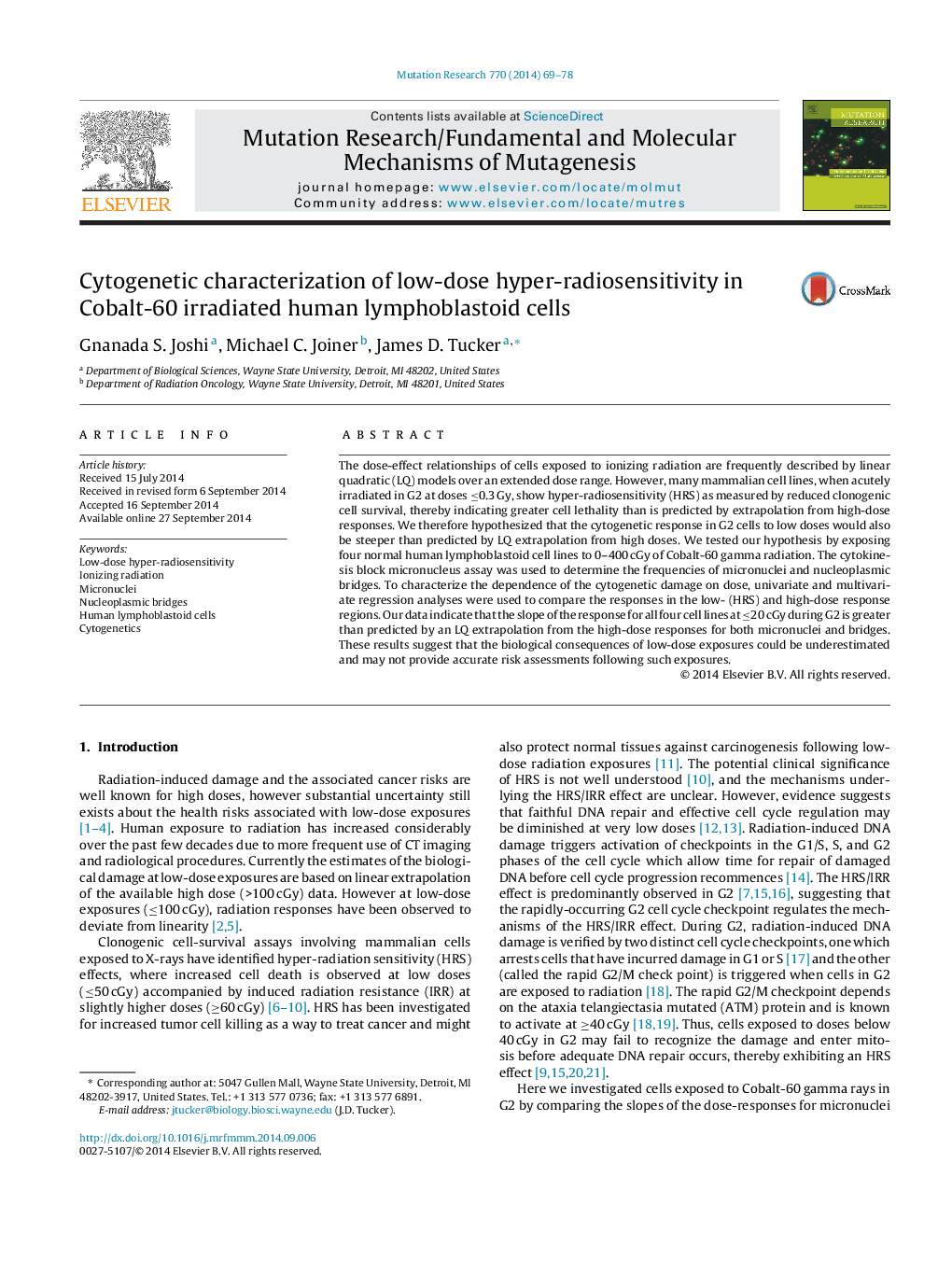| Article ID | Journal | Published Year | Pages | File Type |
|---|---|---|---|---|
| 8455777 | Mutation Research/Fundamental and Molecular Mechanisms of Mutagenesis | 2014 | 10 Pages |
Abstract
The dose-effect relationships of cells exposed to ionizing radiation are frequently described by linear quadratic (LQ) models over an extended dose range. However, many mammalian cell lines, when acutely irradiated in G2 at doses â¤0.3 Gy, show hyper-radiosensitivity (HRS) as measured by reduced clonogenic cell survival, thereby indicating greater cell lethality than is predicted by extrapolation from high-dose responses. We therefore hypothesized that the cytogenetic response in G2 cells to low doses would also be steeper than predicted by LQ extrapolation from high doses. We tested our hypothesis by exposing four normal human lymphoblastoid cell lines to 0-400 cGy of Cobalt-60 gamma radiation. The cytokinesis block micronucleus assay was used to determine the frequencies of micronuclei and nucleoplasmic bridges. To characterize the dependence of the cytogenetic damage on dose, univariate and multivariate regression analyses were used to compare the responses in the low- (HRS) and high-dose response regions. Our data indicate that the slope of the response for all four cell lines at â¤20 cGy during G2 is greater than predicted by an LQ extrapolation from the high-dose responses for both micronuclei and bridges. These results suggest that the biological consequences of low-dose exposures could be underestimated and may not provide accurate risk assessments following such exposures.
Related Topics
Life Sciences
Biochemistry, Genetics and Molecular Biology
Cancer Research
Authors
Gnanada S. Joshi, Michael C. Joiner, James D. Tucker,
